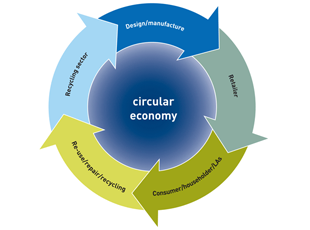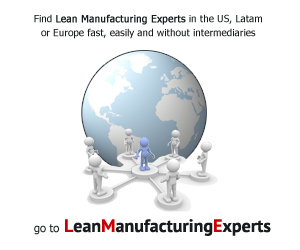Companies and cities adopting concept of circular economy
The projects are still more at the level of recycling waste and lean manufacturing, not at the higher level of rethinking business models to focus on delivering services rather than making products that eventually clog up landfills.
 The idea of circular growth, conceptualized some 50 years ago, is becoming embedded in a number of companies and even in cities like Atlanta in the United States, participants at the eighth Annual Meeting of the New Champions in Tianjin, China, were told.
The idea of circular growth, conceptualized some 50 years ago, is becoming embedded in a number of companies and even in cities like Atlanta in the United States, participants at the eighth Annual Meeting of the New Champions in Tianjin, China, were told.
It works by decoupling growth and resource needs, and advocates a job-creating model where industrial systems are restorative by design. Products, components, untapped resources and materials are fed back into the appropriate value chains, while sustaining economic growth.
The concept is being applied in the Atlanta BeltLine, a $325 million privately funded project to revitalize a 22-mile historic rail corridor that circles the city. When completed, the facility will connect 43 neighbourhoods through pedestrian-friendly rail transit and multi-use trails, 1,300 acres of parks, 1,100 acres of cleaned up industrial land and affordable housing.
“Mayors have the gift of speed,” said Kasim Reed, Mayor of Atlanta, USA. “You can have mayors in cities to buy-in and execute in much faster fashion that any national government you can think of, except maybe for China.” If the Atlanta BeltLine is a success, it can be an example and an exemplar for other cities to emulate.
The Chinese government has actually embedded circular growth in its five-year plan, said Zhu Dajian, Professor and Director, Institute of Governance for Sustainability, Tongji University, People’s Republic of China. But the projects are still more at the level of recycling waste and lean manufacturing, not at the higher level of rethinking business models to focus on delivering services rather than making products that eventually clog up landfills.
One company that has reached that level is Royal DSM, which has developed a new solar panel coating material that generates more energy than current coatings. Instead of making new solar panels, however, the company is re-coating existing panels made by other companies.
“If we go in a green way and use solar panels, economic growth is great,” said Feike Sijbesma, Chief Executive Officer and Chairman of the Managing Board, Royal DSM, Netherlands. “The sun will not stop shining. If you grow at the expense of future generations, we should rethink economic growth.” The linear model of economic growth, where resources are dug up, used and then disposed will not work in a world with 8 billion people.
Beermaker SABMiller is also reaping the benefits of a cradle-to-cradle (as opposed to cradle-to-grave) business model. It uses and reuses its bottles numerous times in Europe, saving millions of dollars in the process. It is also making use of its waste water to generate energy.
The ultimate goal is to adopt circular growth not only in the business but also the entire value chain, including suppliers and retailers, said Andrew Wales, Senior Vice-President, Sustainable Development, SABMiller, United Kingdom. “There is huge opportunity in reducing waste in food, water and energy. The waste in the system is still so large.”
By 2030, the world’s population is expected reach over 8 billion, including 3 billion new middle-class consumers. The challenges of expanding resource supply to meet future demand are unprecedented. The current “take-make-dispose” approach results in massive waste. A potential remedy is the circular economy, an opportunity to reduce material costs that can amount to a saving of $1 trillion a year by 2025.
This year, the World Economic Forum, in collaboration with the Ellen MacArthur Foundation, launched a new report, Towards the Circular Economy, which analysed the economic benefits for businesses shifting towards a circular economy. It also highlighted a new Forum initiative, Project Mainstream, which could help businesses to shift towards a circular economy and as a result save $500 million in materials and prevent 100 million tonnes of waste globally.
Source: eturbonews.com

 News, training, experts opinion, bibliography, software and everything about Lean world.
News, training, experts opinion, bibliography, software and everything about Lean world.
